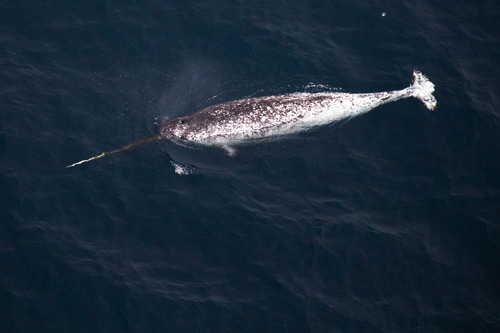
Narwhal
Meet the narwhal, or Monodon monoceros, the 'unicorn of the sea.' Known for its spiral tusk, this Arctic dweller thrives in icy waters, navigating with social pods. Its tusk and social behavior make it a fascinating marine icon, crucial for maintaining Arctic ecological balance.
50 years
Lifespan
800.0 - 1600.0 kg
Weight
Length: 45388.0 m
Size
Grey, Blue, Black, White
Color
9 years
Age of Sexual Maturity
4.25 mph
Top Speed
Least Concern
Conservation Status
Unknown
Population Trend
Characteristics
The Monodon monoceros, commonly known as the narwhal, is a marine mammal found primarily in Arctic waters. It is famous for its long, spiral tusk, which is an elongated upper left canine tooth. Narwhals are social creatures, often found in pods, and they feed on fish, shrimp, and squid. They play a crucial role in the Arctic ecosystem by controlling prey populations and being prey for polar bears and orcas.
Distribution Range of the Narwhal
Monodon monoceros, commonly known as the narwhal, is native to the Arctic regions. It is primarily found in the Arctic waters surrounding Greenland, Canada, and Russia. Narwhals inhabit the Atlantic sector of the Arctic Ocean, including Baffin Bay, the Greenland Sea, and the Canadian Arctic Archipelago.
Narwhal's Habitat
Environmental Conditions
Narwhals are adapted to cold, icy environments. They are typically found in deep coastal waters and are known to frequent areas with heavy pack ice. During the summer, narwhals are often found in shallow bays and fjords, while in the winter, they migrate to deeper offshore waters covered with dense ice.
Ecological Niche
Narwhals occupy a specific niche as medium-sized cetaceans that rely on sea ice for breeding and protection from predators. They primarily feed on fish, squid, and shrimp, using their long tusks to detect and capture prey beneath the ice. Narwhals are also known for their deep diving abilities, often reaching depths of over 1,500 meters to forage for food.
Copyright @ Nature Style Limited. All Rights Reserved.
 English
English